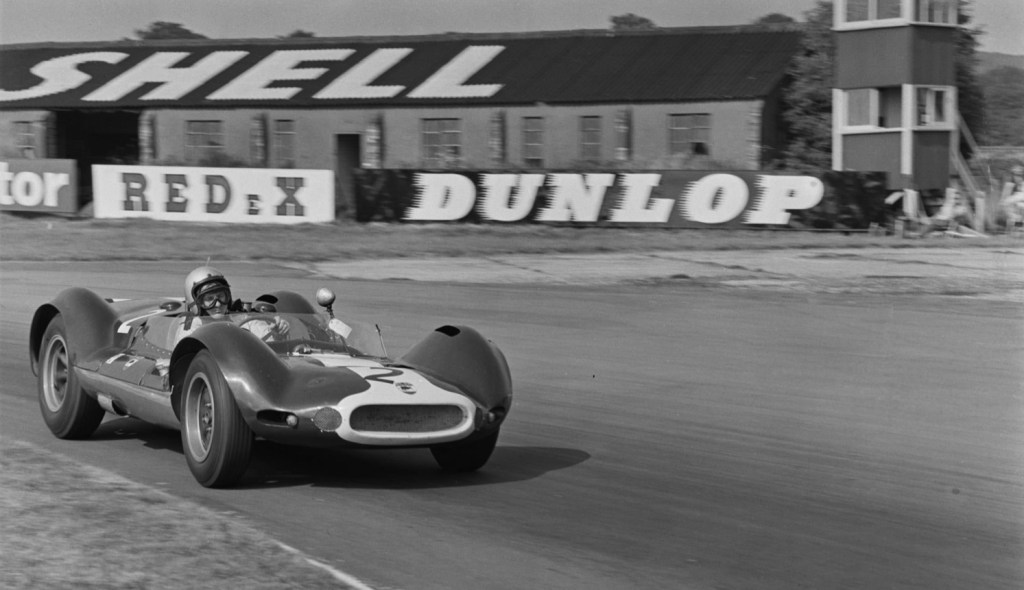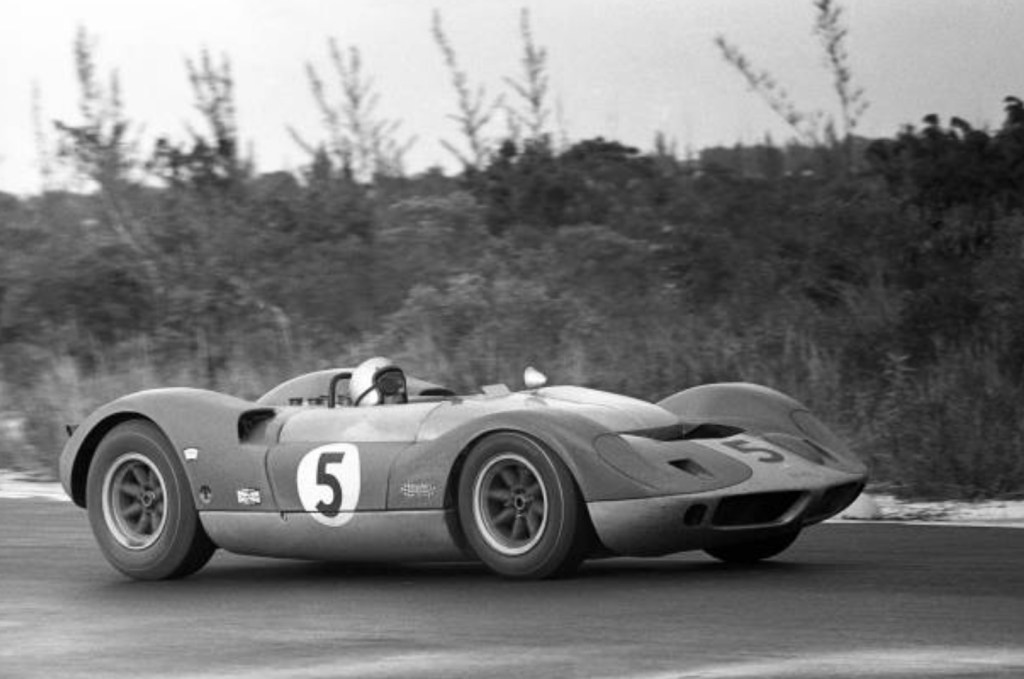
For the last few decades the aerodynamics of racing cars have been developed with the aid of complex computer modelling and sophisticated wind tunnel testing. Things were a bit different in 1964 as Bruce McLaren finalised the specifications of the first McLaren built from the ground up in his own factory – as against the Tasman Cooper T70s he and Wally Willmott built at Cooper in later 1963 – the McLaren M1.
The Kiwi’s head was full of ideas, he was up to his armpits doing countless laps of Goodwood helping to get the best from Ford Advanced Vehicles’ new Ford GT40. His nascent Bruce McLaren Motor Racing Team was racing the Cooper Oldsmobile, a further mutation of the ex-Roger Penske Zerex Climax Special. Then there was his day job with Cooper as leader of their F1 team. Not to forget Cooper’s own Climax engined ‘Monaco’ sporty, or Lola’s Mk6 GT Ford, he had done plenty of laps in those too.

Never was a man better placed than Bruce right then to know exactly what a winning sports-racer’s attributes needed to be. After all, in June he’d won the Players 200 at Mosport in front of some of the best in the world (Dan Gurney, Jim Hall, AJ Foyt, Roger Penske and Ken Miles) aboard his just finished Cooper Olds aka Zerex Special. This very finely honed grandfather’s axe had just copped a new McLaren built centre cockpit section and 3.9-litre Traco modified Oldsmobile V8 to replace the lissom Coventry Climax FPF four. More on the Zerex Special here; Roger Penske’s Zerex Special… | primotipo…
While testing the Cooper Olds at Goodwood, McLaren’s mechanics, Wally Willmott and Tyler Alexander got tired of continually removing the front section of the Cooper Olds bodywork, just to check brake and clutch fluid levels. So they decided to cut a small access hatch above the master cylinders, it was hinged at the front and held shut with a Dzus fastener at the rear.

On one of Bruce’s test runs the fastener came loose. McLaren noticed the flap lifting, showing negative pressure just where he thought it would be positive, and would therefore hold the flap shut.
Bruce, Wally and Tyler discussed the phenomena. They concluded that if it was a low-pressure area, they could exhaust hot air from the water and oil radiators through the top of the body to assist cooling. The method until then had been to exit the air around the front wheels.
They decided to change the radiator air exit, so Tyler set-to with tinsnips and cut a big square hole in the body behind the radiator. The flap of alloy wasn’t cut at the top but folded down behind the radiator to deflect the air upwards.

After his test run with the changed nose, George Begg wrote, “Bruce reported that the front of the car now had better grip, this helped reduce high speed understeer. In turn this meant a larger rear spoiler could be employed so as to again balance the car’s handling at high speed.”
“This was a big breakthrough as it meant both better cooling and higher downforce from the body. Back at the factory an alloy panel was made and fitted to smooth the flow of air through the big square vent in the top of the bodywork.”
The Cooper Oldsmobile raced with the top-duct fitted for the balance of its life.

This innovation – I’m not saying McLaren were the first to do it, check out the duct on the Ford GT40 shown above that May – was then deployed on all front-radiator McLarens. Right from the first M1 sportscar – with the exception, for some reason, on the 1967 single-seaters – until the 1971 side-radiator M16 Indycar headed in a new aerodynamic direction initiated by Lotus’ epochal types 56 and 72.
McLaren’s approach quickly became the global paradigm. It really was a major advance, one borne of a dodgy Dzus fastener and the computer like brain of Bruce Leslie McLaren, with not a data-base or wind tunnel to be seen.

Bruce McLaren aboard his brand new McLaren M1 Oldsmobile at Goodwood in mid-September 1964.
It’s his first run with bodywork – note the neat radiator duct – his first laps of the spaceframe machine were completed sans body, a practice followed for years with McLaren’s single seaters and sportscars.

The McLaren M1’s Engine at this stage was a Traco prepped circa 310bhp 3.9-litre aluminium V8, gearbox a Hewland four speed HD, wheels are Cooper magnesium. More on the McLaren M1 here; Lola Mk6 Ford, Bruce McLaren and his M1 Olds… | primotipo…

The finished product during the Bahamas Speed Week at Nassau in December 1964.
Bruce placed second to the Hap Sharp/Roger Penske driven Chaparral 2A Chev in the feature race, the Nassau Trophy, despite giving away a litre or so and several years of ongoing development to the Rattlesnake Raceway boys.

Wally and Tyler sending Bruce away after a pitstop during the 405km race – 56 laps of the 7.2km Oakes Field Course.
Apart from the two factory Chaparrals (Penske jumped into Sharp’s car after an off-course excursion), the classy field of outright contenders included Pedro Rodriguez in a NART Ferrari 330P, Walt Hansgen’s Scarab Mk4 Chev, Dan Gurney’s Lotus 19 Ford and Jerry Grant’s Chev engined 19.
It was a great start for McLaren, orders for the cars poured in, this led to the deal Teddy Mayer concluded with Elva cars to produce customer McLarens, an incredibly smart and lucrative way to deal with the punters…

Reference and photo credits…
‘Bruce McLaren: Racing Car Constructor’ George Begg, Wally Willmott, GP Library, LAT Images, Getty Images – Bernard Cahier
Finito…